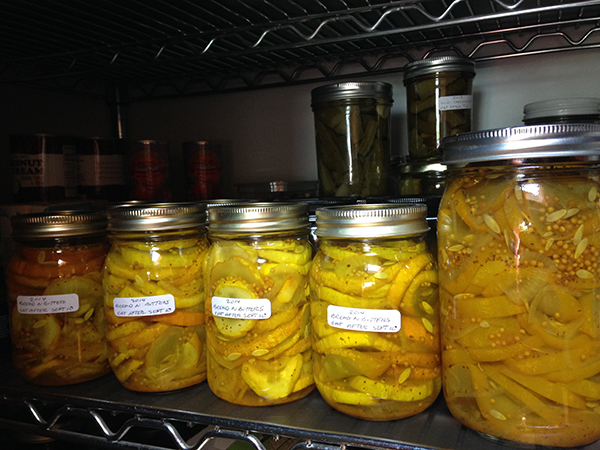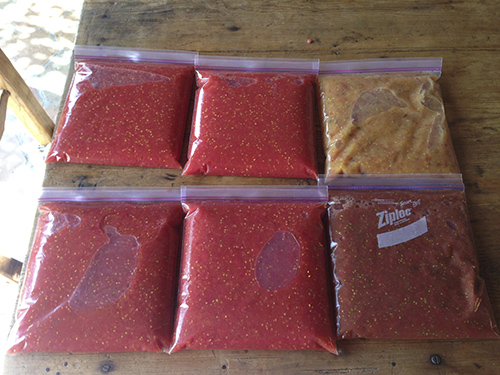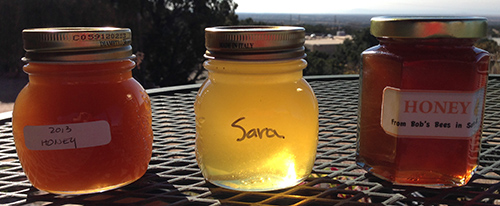
Bees on a brood bar capping honey
Before I talk about how our bees did this year, here are some mind boggling facts about bees and honey that should make you appreciate them.
—Bees need to visit 2 million flowers and travel about 50,000 miles to make a pound of honey.
—In its lifetime a bee makes about 1/12th of a teaspoon of honey so it takes 36 bees to make a tablespoon of honey.
—Honey bees make little flakes of wax about the size of a pin head. It takes 500,000 flakes of wax to make one pound of bees wax.
—Bees pollinate about 90% of our food crops.
—In a strong hive there are 70,000 – 100,000 bees in a hive in the summer and their numbers go down in the winter.
—Bees do not hibernate. They stay inside their hives maintaining a temperature of about 95-96-degrees at the middle of their cluster all winter by beating their wings to stay warm. Bees rotate from the outside of the cluster to the inside as they get cold while the ones on the inside rotate to the outside, all the while keeping the queen warm.

Our 2 hives produced over 8 lbs of harvestable honey this year which is wonderful as we haven’t collected honey in two years. We always left them with enough honey to get through winter which sometimes didn’t leave us any. With all the rain and flowers this year, they were super busy making honey and there was plenty for all. We left lots of bars of honey for them for winter. In our land with many droughts, plenty is not a word we use a lot when it comes to honey production. For other areas in the country, this may not seem like a lot, but for us it makes us appreciate our girls more. Oh yea, all the bees that you see outside on the flowers are girls-go girl power!
Based on the info above, our bees visited 16 million flowers to make that 8 lbs! Unbelievable! So next time you spread that tablespoon of honey on your toast, think about all 36 bees it took to make it and appreciate all the bees for their wonderful gift.

We’ve put them to bed for the winter last month in October. We’ve put a false wall to make their living area smaller so they stay warmer and straw bales around each of their hives to give them extra insulation from the wind and cold. We hope they make it through winter.












